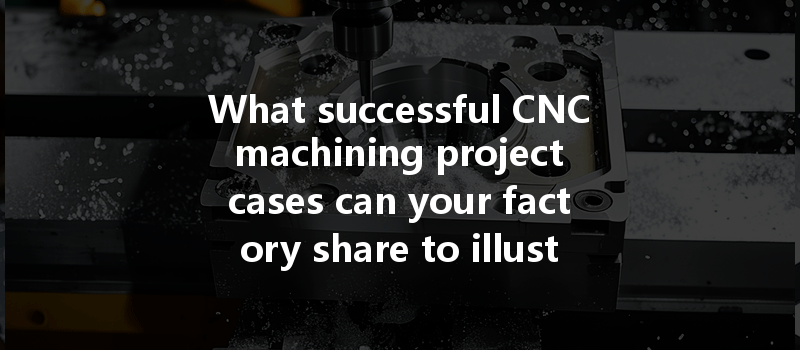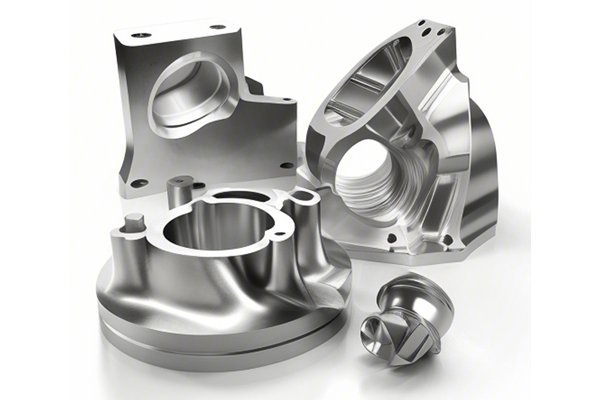: The Impact of CNC Machining in Modern Manufacturing
Did you know that CNC machining is responsible for producing everything from the intricate components in your smartphone to the entire structure of an aircraft? According to a report by MarketsandMarkets, the global CNC machining market is expected to grow from $63.8 billion in 2021 to $97.1 billion by 2026, indicating a compound annual growth rate (CAGR) of 8.6%. This remarkable growth not only highlights the increasing reliance on CNC machining in various industries but also points to the advancements in technology and methodology that manufacturers are adopting to remain competitive.
In this blog, we will delve into several successful CNC machining project cases, showcasing how companies have tackled challenges, optimized processes, and achieved remarkable outcomes. We will analyze the lessons learned from these cases and extract best practices that can be applied across various industries. Whether you’re a manufacturer, a product designer, or simply curious about CNC machining, this blog aims to equip you with insights that can enhance your understanding and application of CNC technology.
Section 1: Understanding CNC Machining
Before we dive into specific project cases, it’s imperative to understand what CNC machining is and why it is a cornerstone of modern manufacturing.
1.1 What is CNC Machining?
CNC, or Computer Numerical Control, is a manufacturing process that uses pre-programmed computer software to control machine tools. This process can be used to control a range of complex machinery, from grinders and lathes to mills and plasma cutters. CNC machining offers several advantages, including:
1.2 The Importance of Successful CNC Projects
Success stories in CNC machining demonstrate how companies can effectively navigate challenges and innovate their production processes. Lessons from these projects can inspire others in the industry to improve their practices, achieve cost savings, and enhance product quality.
Section 2: Case Study 1 – Aerospace Component Manufacturing
2.1 The Challenge
A leading aerospace manufacturer faced challenges in producing complex components required for aircraft engines, specifically a series of turbine blades that required high precision due to extreme operational conditions.
2.2 Approach
The company implemented a multi-axis CNC machining strategy, using 5-axis machines to manipulate the components in a manner that minimized setup time and increased accuracy. Advanced simulation software was also employed to predict the machining process’s outcomes, allowing them to optimize tool paths before actual machining began.
2.3 Results
Section 3: Case Study 2 – Medical Device Prototyping
3.1 The Challenge
A medical device company needed to rapidly prototype a new device but faced problems with conventional machining methods that were too slow to meet market demands.
3.2 Approach
The company adopted CNC prototyping techniques, leveraging Rapid Prototyping methods such as additive manufacturing and CNC machining to create functional prototypes within weeks.
3.3 Results
Section 4: Case Study 3 – Automotive Parts Production
4.1 The Challenge

An automotive parts manufacturer needed to reduce the cost of producing a specific part without sacrificing quality due to rising competition and material prices.
4.2 Approach
The company implemented a lean manufacturing approach combined with CNC machining, focusing on continuous improvement. They re-evaluated their existing processes and integrated advanced tooling and fixtures to streamline production.
4.3 Results
Section 5: Case Study 4 – Custom CNC Machining
5.1 The Challenge
A custom CNC machining service provider struggled to maintain quality across diverse projects while meeting fast turnaround times.
5.2 Approach
The provider adopted a modular manufacturing system that allowed them to quickly adapt their machining processes to different project requirements. The integration of real-time monitoring systems also provided insights that allowed them to maintain quality throughout varying workloads.
5.3 Results
Section 6: Challenges and Solutions in CNC Machining Projects
While the aforementioned case studies illustrate successful endeavors, it’s essential also to recognize the common challenges CNC machining projects face and how to address them effectively.
6.1 Common Challenges
6.2 Solutions
: Embracing Best Practices for Future Success
Through the examination of notable CNC machining project cases, we can draw valuable insights into effective methodologies and proven best practices. The importance of precision, flexibility, and continuous improvement shines through these scenarios, emphasizing why companies must adapt and innovate in the evolving landscape of manufacturing.
By embracing the lessons outlined in this blog, manufacturers can enhance their processes, achieve better results, and ultimately gain a competitive advantage in their respective industries. As CNC machining continues to evolve, staying attuned to emerging technologies and methodologies will be vital for sustaining success.
In summary, whether you are looking to optimize costs, improve quality or enhance turnaround times for your CNC projects, learning from successful case studies can provide the roadmap you need for achieving excellence in manufacturing. Remember, as you navigate your own projects in CNC machining, the key to success lies in constantly seeking improvements and remaining adaptable in this dynamic field.
Related Posts
- How can manufacturers ensure zero error in CNC machining while maintaining high machining quality?
- What are the main advantages and challenges of combining CNC machining with traditional machining processes?
- How can you optimize the quality control process of CNC aluminum machining for better results?






